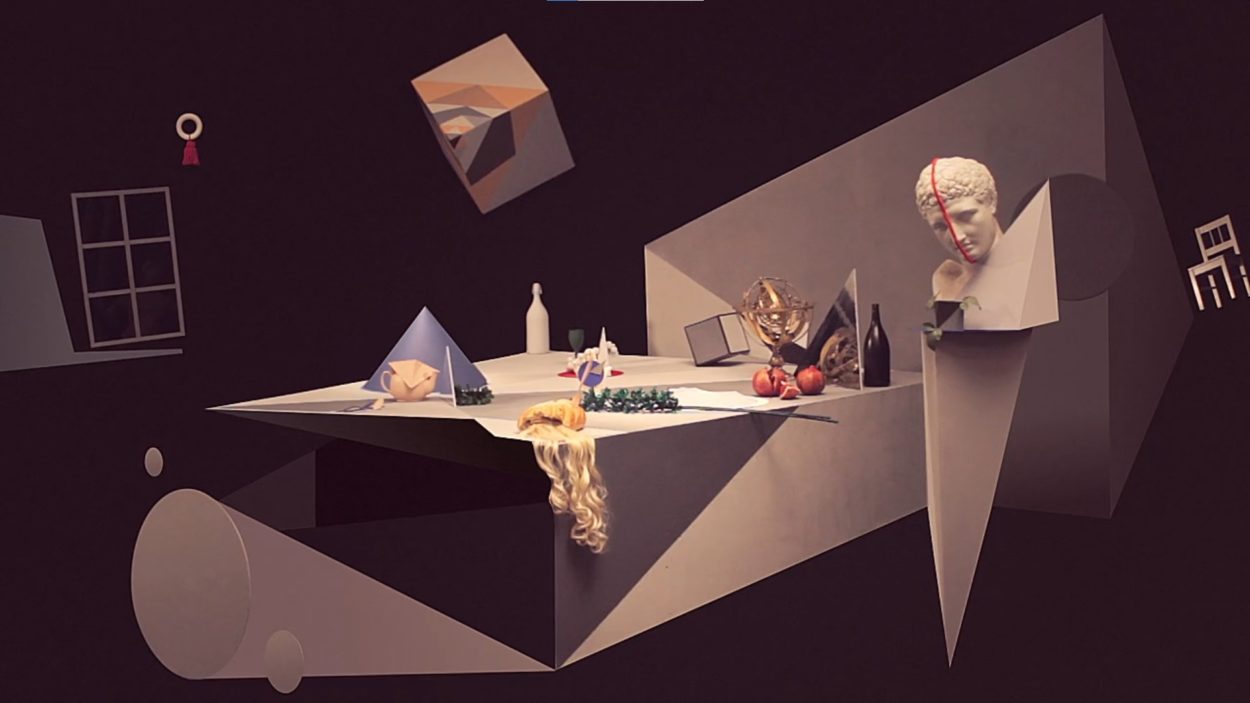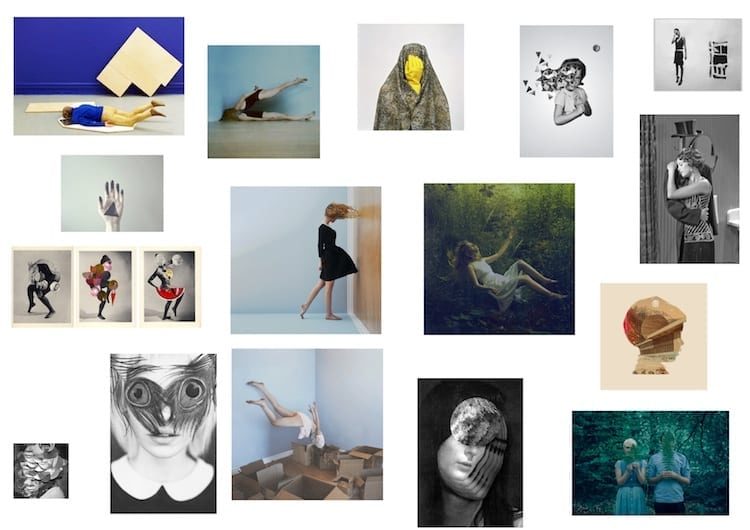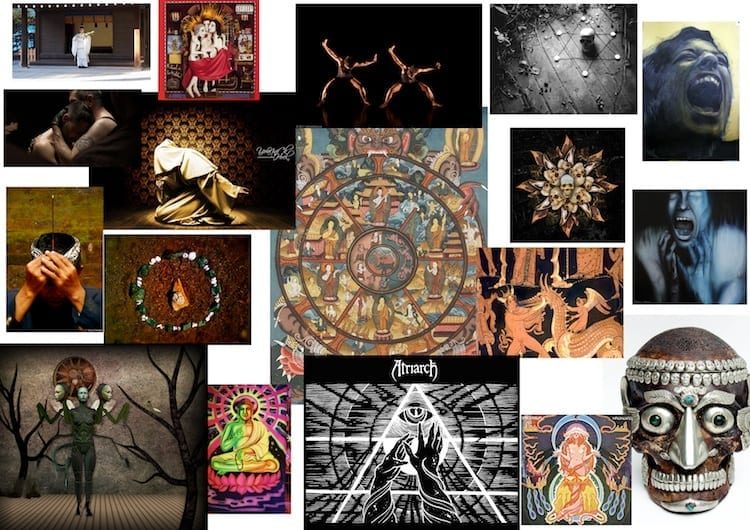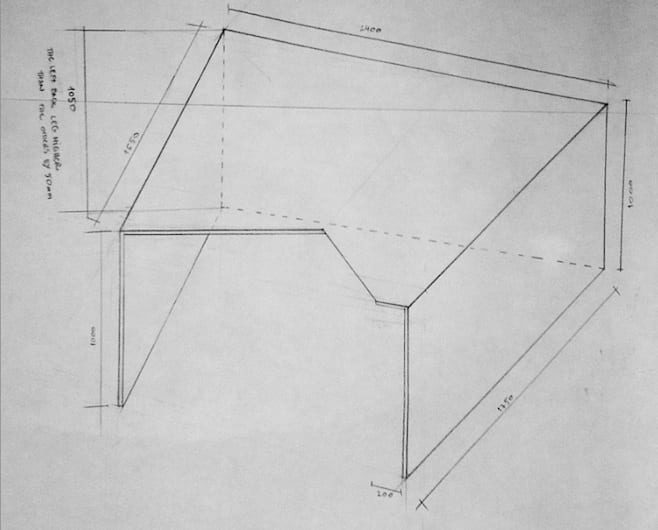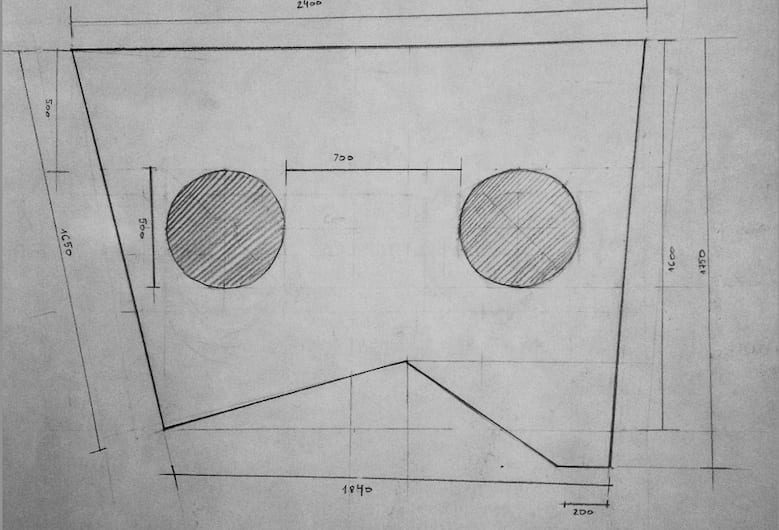Dance, theatre, design, art, animation, vfx – your film must have taken you years to detail each sequence. Please tell us about your creative process.
I know it may appear as though it’s a crazy amount of stuff to think about for just one project, but actually the main creative challenge was to merge performing arts with design, animation and vfx, without relying just on CGI techniques.
I also wanted to explore the Japanese Kuroko technique, by turning it into something more contemporary, with also a strong link to design and animation.
Did you draw on any specific references? And just how did you work out those optical illusions?
I took inspiration mainly from Surrealism and Deconstructivism, especially exploring their graphic elements. Using those examples, we (Terrible Twins and I) started to draw sketches of the main scene, the table and all the main shapes we used on the set. We played with perspectives, lines, and shapes. We chose flat colours and analogous tones, so that the viewer’s eyes could easily mix and blend things together into one weird 2D/3D world; real 3D objects painted to make them look flat and flat surfaces that looked like 3D objects.
Amongst your skills you’re a motion graphics artist and yet a lot of the scenes we understand are done in camera. Please tell us about that.
My focus was on creating aesthetic analogue and in camera effects. I approached the stage as if it were a Photoshop/After Effects canvas. I wanted to work within a living layout. One of the main technical challenges was to create the set – we built the main scene to represent this surreal world. We wanted the viewer to have the feeling that the set was already retouched in Photoshop (the analogue effect, again!)
Another big technical challenge was to design and animate dynamic scenes in camera, i.e. the scene of the mirrors where the lead actress falls over a mirror, and the impact breaks it into a lot of smaller bits.
First, we had to use multiple cameras to record the action from different angles (because of the unique moment). Then, we had to find a way to visualise the mirror and break it into pieces (we attached little pieces over three performers in a particular way so that the central performer ‘was wearing’ the biggest pieces and the two lateral performers ‘were wearing’ the little fragments.
Of course, we also had to use very light materials, and also fake mirrors to be able to easily manage the dynamic of the action. And lastly, we had to reproduce the right movement between all the different elements to create the illusion of something smashing and breaking up.
What was behind your decision to develop a narrative of “a woman on a journey of self-discovery”?
I felt that having a leading character dealing with the environment, which mirrors her thoughts, movements, and perceptions, would have allowed me to tell a universal story which belongs to every single human being. We all have fears and hopes. We’re all struggling with making life-changing decisions and need to carefully listen to our inner selves to find the confidence to make our own destinies. Le Mystère explores human weaknesses and strengths that make us slow down and speed up during our journey.
Was the film a big budget commission or was it a passion project with mates rates?
It was commissioned by a London-based artist management company, Pitch & Folks, with a small budget. At the same time, I had the chance to work with very talented professionals. Just to mention a few, the Terrible Twins did excellent work on the set and props design, as well as on the art direction of costumes, make-up and hair, and Tiffany Tonel, a very talented young Californian dancer with amazing acting skills too.
Did you work closely with Hugo & The Prismatics on the video – or was it entirely your interpretation?
During the project I met Hugo a few times, and since our first meeting, we always had a very strong synergy. He explained to me his vision about the upcoming album “The consequences of Loop”, talking both as a DJ, but also as a jazz/funky musician. He wanted to create something abstract and metaphysical, and these two keywords were enough to make me very happy and quite excited about the project. So I basically tried to translate his feelings and thoughts into an inspiring visual piece.
Are you signed to a production company and whereabouts are you based?
I’m based in London right now. I was very excited when I saw that one of the most interesting directors of the moment Andrew Thomas Huang was among the first people who blogged and tweeted about Le Mystère! So, I’m currently evaluating which production company could help me to work on very creative and challenging videos. Let’s see what happens.
See behind the scenes photography on Flickr
LINKS:
